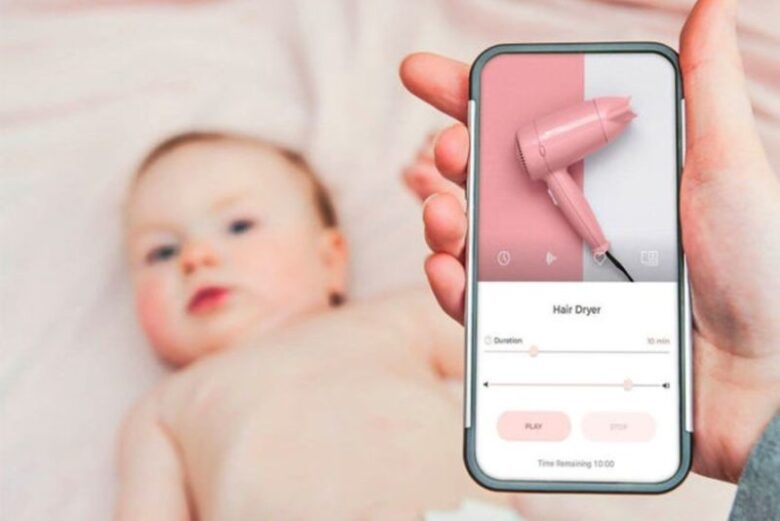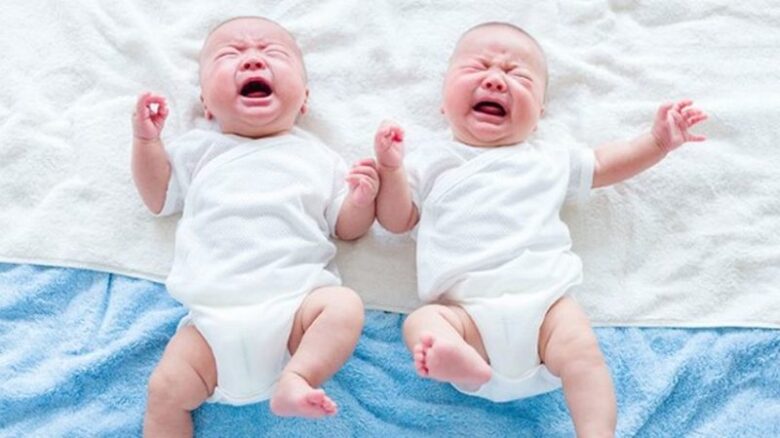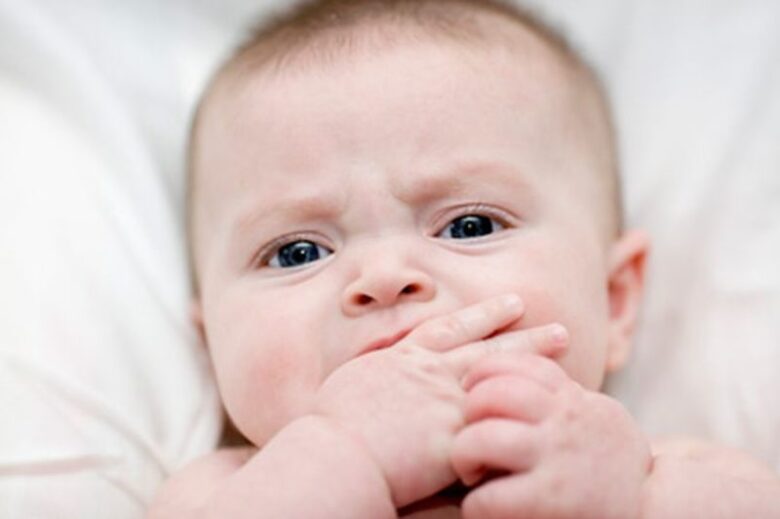Many mothers say that, first of all, white noise helps babies to relax faster and sleep better, without jumping up every time they hear any noise. According to the research of the American scientists, white noise (for example, the sound of a working fan) in the baby’s room reduces the risk of the Sudden Infant Death Syndrome by 72%.
But how does white noise affect the process of falling asleep and the quality of the baby’s sleep?
White Noise Helps the Baby to Relax and Fall Asleep
When the baby is tired and wants to sleep, familiar “home” sounds of white noise promote relaxation. At the stage of falling asleep, the sound volume should be at the medium level (about 50 dB). This kind of sound background should make you feel comfortable, as it resembles the sound of the running shower (when you are actually in the bathroom) or the sound of the falling rain outside.

source:whattoexpect.com
Today, the US market offers a wide range of devices that automatically generate white noise, so that the user doesn’t have to worry about the volume settings. You can read about one of the best white noise machines for baby in this article.
White Noise Promotes Longer Sleep
According to CuteLittleDarling.com, the sleep cycle of a 1.5-2-year-old child is from 40 to 45 minutes on average. And even within this short cycle, there are moments of waking up in between stages of sleep (for example, 15-20 minutes before going into a deep sleep).
Moreover, in children, the stage of fast sleep – subtle and light “dreaming of sleep”, the sleep with rapid eye movement – occurs twice more often than in adults. For active, sensitive and restless babies, white noise can become a sort of a signal for sleep, which helps to comfortably switch from one stage of sleep to another, without additional efforts from an adult.

source:lifewire.com
If your baby wakes up every 20-40 minutes during the day or every 90 minutes at night, white noise can and should be used during the day sleep and the night sleep under the following conditions:
- The volume of white noise (measured at the head of the baby) should not exceed 50 dB.
- The source of white noise should be at least a meter away from the place where the baby is sleeping.
- The sound of white noise should be comfortable for all family members that sleep in the same room.
White Noise Stops the Baby From Crying
If the baby is crying a lot – for example, because of overexcitement or fatigue – white noise, especially together with slight rocking, really helps to calm the nervous system of the baby. It is important to know two rules of using white noise in these cases:

source:whattoexpect.com
When the baby is crying, the volume of the sound of white noise should be slightly higher than the sound of a baby’s crying. It is important that the baby hears it through the loud crying and starts listening to it.
As soon as the baby calms down (it usually happens within five minutes), it is necessary to turn down the volume of white noise to 50 dB (the sound of the rain or water in the shower).
And if the Baby is Crying Because of Hunger or Discomfort?
Crying due to discomfort. If the baby is crying due to discomfort (it wants to burp, a diaper needs to be changed, baby is not able to release gas, etc.), the first step is to eliminate the source of discomfort: hold the baby in the upright position, change the diaper, rub its tummy and/or draw up its knees, etc.

source:zerotothree.org
Crying because of hunger. If a baby is crying because it is hungry, its natural need must be satisfied. Next time, try to be proactive and feed the baby before it starts crying.
How Do I Recognize the First Signals of “I’m Hungry”?
Babies are different, but usually, a hungry baby opens its mouth, starts moving actively, and sucks its fists restlessly.

source:tummycalm.com
Even if you are not able to do things in advance yet, don’t worry. Look for signs of tiredness, observe your baby’s body language, and pay attention to the first signs of hunger. And pretty soon everything will work out!
In Conclusion
It is important to understand the purpose of using white noise. If you need to soothe a crying baby urgently, a hairdryer noise will work. If you want to improve the quality and duration of the baby’s sleep and use white noise regularly, it is better if you purchase a special white noise machine for the baby or use special CD recordings developed by manufacturers specifically for quality sleep.

